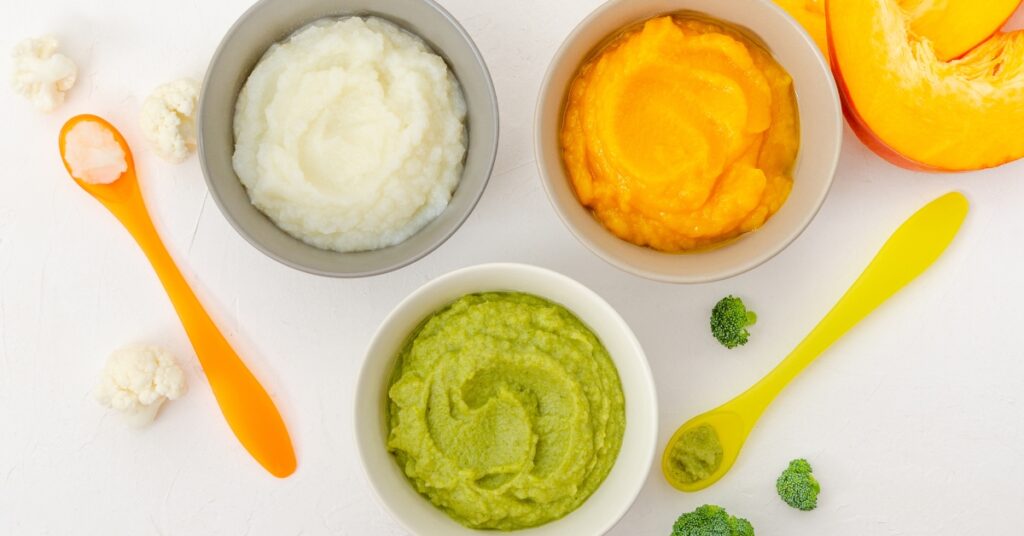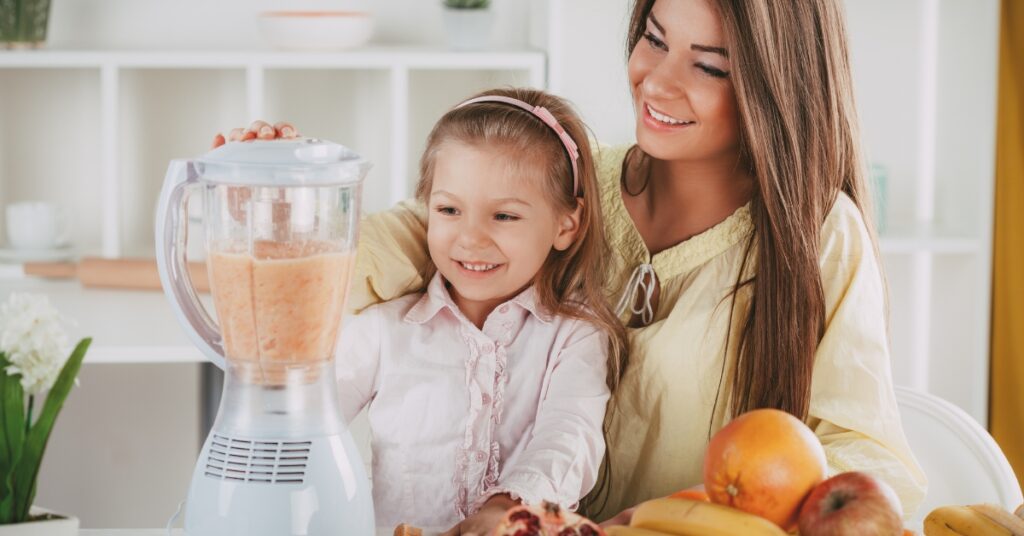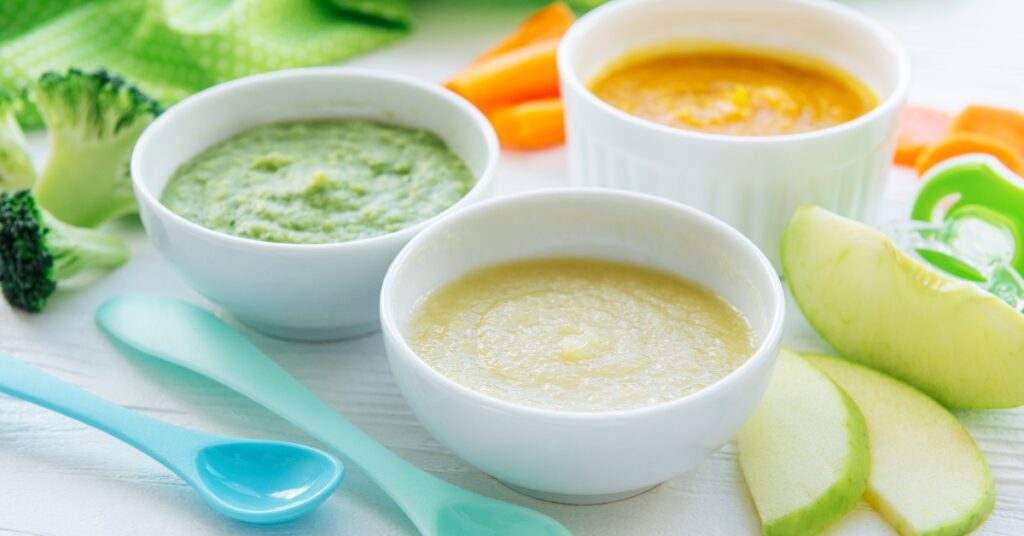The Joy of Homemade Baby Food Puree Recipes
Crafting your child’s very first meals is a quiet kind of magic. Homemade baby food purees use not simply nutrition but a routine of love.
Why Purees Are Perfect for Early Feeding Stages
Smooth, mild, and simple to digest– purees are nature’s response to a baby’s budding appetite. They offer essential nutrients while reducing your child’s chewing, swallowing, and enjoying. Purees also minimize choking risks and enable a slow, sensory expedition of brand-new foods.

What Makes a Baby Love a Puree?
Babies are drawn to vibrant, familiar tastes, particularly those with natural sweetness, like fruits and root vegetables. Purees become small love letters written in spoonfuls when served with convenience and perseverance.
Starting with Baby Food Purees
When to Introduce Purees to Your Baby
Around six months is the golden window. By this age, most infants can sit upright, reveal interest in what they’re eating, and might even simulate chewing. However, readiness is private- some may aspire to be an explorer at five months, while others take longer to join the culinary journey.
Indications Your Baby Is Ready for Pureed Foods
Look for the cues: increased cravings, interest during mealtimes, or trying to get your food. Tongue-thrust reflex fading and better head control are essential signs, too. When your little gourmand reaches for your plate with a wide-eyed marvel, it’s go-time.
Tools You Need to Make Smooth and Safe Purees
A fundamental mixer, food processor, or hand masher will be enough. Cleaners, fine mesh strainers, and silicone ice cube trays for storage simplify life.
Puree Prep Essentials
Choosing the Freshest Ingredients for Your Baby
Select vibrant, in-season produce and whole foods with no additives. The fresher the active ingredient, the richer the nutrients.
Washing, Prepping, and peeling for Nutrient Power
Peel only when required—sometimes, the skin holds the genuine nutrient treasure. Slice into uniform pieces for even cooking.
- Steam, Boil, or Roast: Best Cooking Methods for Flavor
- Steaming maintains vitamins and enhances the natural sweet taste. Boiling is easy but can leach nutrients if exaggerated. Though less common for infant food, roasting adds intricacy and caramelization—perfect for older infants ready for bolder flavors.
- Foods: Simple One-Ingredient Purees
- Classic Sweet Potato Baby Food Puree Recipe
- Earthy, velvety, and naturally sweet. Roast or steam until tender, blend with a dash of breast milk or formula, and you have a silky intro to solids.
Creamy Banana Puree for Tiny Taste Buds
No cooking is required. Mash a ripe banana till smooth. It’s the best on-the-go puree loaded with potassium and mild sweetness.
Mild and Soothing Carrot Puree for New Eaters
Steam peeled carrots till soft and mix into a smooth orange delight. Carrots are abundant in beta-carotene and boast a subtle, crowd-pleasing taste.
Completely Smooth Avocado Puree in Minutes
Slice, scoop, and mash avocados. They contain healthy fats crucial for brain development, and their buttery texture needs no cooking—just love.

Single-Veggie Apple Puree That Babies Adore
Peel, core, and steam apples for a comfortable, fall-scented reward. This puree is sweet and tart and perfect for later blending with other fruits or grains.
Taste Combos for the Curious Palate
Sweet and Savory: Apple and Butternut Squash Puree
This golden mix marries the sweetness of apples with the nutty depth of squash– a comforting blend with autumnal style.
Tropical Twist: Mango and Banana Baby Food Puree
A sunshine-filled spoonful. Rich in vitamin C and vibrant flavor, this duo is smooth, unique, and a getaway for baby’s taste.Green Goodness: Spinach, Pear and Pea Puree Blend
Moderate peas, juicy pears, and leafy spinach develop a verdant collection packed with fiber and folate. This is an excellent introduction to green veggies.Berry Delight: Blueberry and Oat Baby Puree
Antioxidant-rich blueberries satisfy hearty oats for a breakfast-style puree. Slightly thicker in texture, it preps children for more adventurous meals.
Protein Power: Lentil, Carrot and Apple Puree
A plant-based powerhouse. Red lentils prepare rapidly and mix smoothly with the sweet taste of apple and carrot, delivering iron, fiber, and warmth.
Textures and Stages: Growing with Your Baby
How to Adjust Consistency for Age and Stage
Younger infants need silky-smooth textures. As they grow, thicken purees slowly by minimizing liquid or adding carefully mashed pieces. It’s a sensory evolution.
From Silky Smooth to Slightly Chunky: A Texture Timeline
Start with liquid-smooth at 6 months. By 8 months, aim for thicker purees. By 10 months, little soft swellings assist in getting ready for chewing without frustration.
Transitioning from Purees to Mashed Meals
Present soft finger foods like steamed veggies, ripe fruit portions, and grain puffs. Mix mashed textures with familiar purees to alleviate the leap into solids.
Storage, Safety, and Sanity Tips
How to Safely Store Baby Purees for Later
Fresh purees can live in the refrigerator for approximately 72 hours. Use airtight containers and label them with dates. When in doubt, toss it out.Freezing Purees Without Losing Flavor or Texture
Freeze in little parts utilizing silicone trays. Once frozen, transfer cubes into identified bags. Defrost overnight in the refrigerator or gently reheat over warm water.Defrosting and Reheating Baby Food the Right Way
Avoid microwaving in plastic. Warm purees slowly and stir thoroughly to avoid locations. Test the temperature before serving.Batch Cooking Hacks for Busy Parents
Prepare in large batches, freeze in meal-sized portions, and rotate recipes weekly. Keep a puree coordinator to track the flavors presented and the child’s favorites.Allergy-Friendly and Special Diet Purees
Dairy-Free and Gluten-Free Baby Food Puree Recipes
Many standard purees are naturally complimentary from irritants; however, always double-check active ingredients. Use rice or coconut milk for velvety consistency without dairy.Low-Allergen Veggie Purees to Start With
Squash, zucchini, and parsnips are mild on the gut and unlikely to trigger responses. Before exploring, start with single-ingredient blends.Iron-Rich Purees for Vegetarian Babies
Lentils, spinach, quinoa, and fortified grains use a strong iron punch. Pair them with vitamin C-rich fruits to boost absorption.Innovative Ways to Serve Baby Purees
Utilizing Ice Cube Trays for Portion Control
Each cube is the best part. Pop them out as needed, mix tastes, and prevent waste. Its effectiveness fulfills infant food.Enjoyable Spoons and Bowls to Make Mealtime Joyful
Intense colors, soft products, and suction bowls turn feeding into play. Baby-safe utensils also promote self-reliance and interest.

Turning Purees into Finger Foods for Older Babies
Spread purees on toast strips or mix into small pancakes. Use as dips for steamed vegetable sticks or spoon into reusable pouches for on-the-go treats.
Repairing Common Challenges
When Baby Refuses a Puree, what to Do
Sometimes, it’s texture, and often, it’s timing. Switch flavors and offer familiar favorites alongside new ones.
Avoiding Blandness: Natural Ways to Boost Flavor
Use herbs like basil or cinnamon in small amounts—roast veggies for natural sweetness. Let tastes shine without salt or sugar.
Acknowledging Signs of Food Sensitivities
Look for rashes, tummy problems, or unusual fussiness. Introduce new foods one at a time, and keep a food journal to identify patterns.
Conclusion
Commemorating Your Baby’s First Food Adventures
Accept the joy, the laughter, the learning. These are the tasty starts of a long-lasting relationship with food.
Keeping Mealtime Stress-Free and Joyful
Let go of perfection. Follow your baby’s cues. Develop rituals that welcome connection, not chaos. Mealtime can be a calm, nourishing anchor in your day.

Next Steps After Purees: A Guide to Table Foods
Once purees are mastered, it’s time for soft solids and textured meals. Expand the menu, consume together, and let the baby enjoy the journey—one bite at a time.
Homemade child food purees offer nourishment as well as a ritual of love. Smooth, gentle, and simple to absorb, purees are nature’s answer to an infant’s budding appetite. They also minimize choking risks and allow a slow, sensory exploration of new foods.
Purees become tiny love letters composed in spoonfuls when served with comfort and patience.
It’s the best on-the-go puree with potassium and a gentle, sweet taste.






